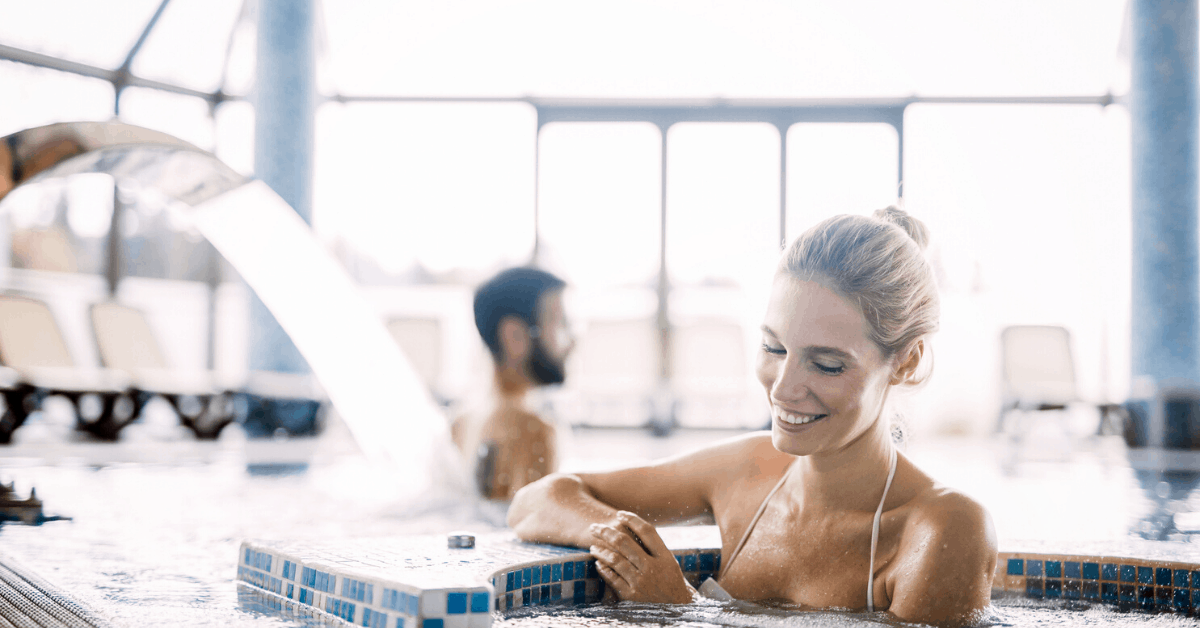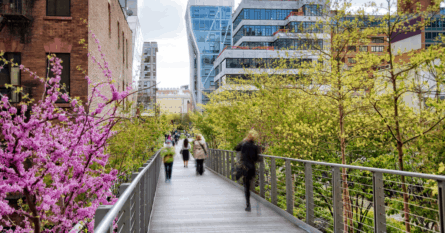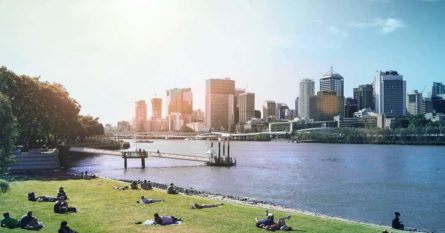Take a tour of Reykjavik by water – specifically the geothermal waters of the Icelandic capital city’s pools and hot tubs.

“Don’t forget to pack a swimsuit,” is probably not a phrase you’d expect to hear when planning a trip to Iceland, a country that reports snowfall 10 months out of the year. However, because Iceland is situated on top of 30 active volcanoes, most of the water is geothermally-heated, giving locals an abundance of hot springs and heated swimming pools to enjoy all year round.
In fact, many Icelanders make swimming part of their daily ritual. They use their time in the outdoor hot tubs, or hot pots as they call them, as a way to catch up on news and gossip and connect with friends.
The most famous hot spring in Iceland, the Blue Lagoon, is known for its upscale amenities, pale blue water, and volcanic rock, which creates natural walls around the pools.
But, you don’t have to leave Reykjavik to take advantage of this special part of Icelandic life. In the city alone, there are 17 municipal swimming pools to choose from, each with their own unique features like saunas, fountains, and water slides.
This guide is organized by neighborhood to help you try some of the best hot pots in the city, as well as show you places to check out once you’re back on dry land.
Sundhöll Reykjavíkur (Reykjavik Swimming Hall), Baronsstigur
After almost 40 years of planning and construction, Iceland’s first “sundhöll“, or public swimming hall, opened its doors in 1937.
This location has both an indoor and outdoor pool for laps, hot tubs, Jacuzzis, and a children’s pool. The vibe here is very social, especially in the evening, as it is one of the few open until 9:30 p.m. During the summer, they allow access to the indoor diving board starting around 5 p.m.
What to do nearby
As little as 20 years ago, Reykjavik had a dearth of dining options, in part due to the high cost of importing supplies. However, times have changed, and it’s now home to a slew of restaurants that will please every palate.
Once you’ve worked up an appetite from swimming, head to the nearby main street Laugavegur, one of the hottest streets for nightlife in the city.

Foodies, try Matwerk, a Nordic gastropub with small plates. Fans of the Cohen brothers’ cult classic film “The Big Lebowski”, will love the quirky Lebowskibar, which offers unique specials like The Dude’s signature drink, a White Russian, “Subs of the Month” sandwiches, and TV and film-themed quiz nights.
End your night at the alternative music and performance space Mengi, which hosts artists, authors, and musicians from all over the world for special events.
Laugardalslaug, Laugardalur
Laugardalslaug hosts Reykjavik’s largest outdoor swimming pool and has something for everyone with six hot pots, a seawater tub, a Jacuzzi, saunas, a waterslide, an Olympic-size swimming pool for laps, and even a beach volleyball court.
It’s the most-visited pool complex in Iceland after the Blue Lagoon and has lots of kid-friendly features, so prepare for the crowds when you go.
What to do nearby
If the weather is nice, take advantage of the many activities open to you in the Laugardalur Valley. Fjölskyldugarðurinn, a nearby park, hosts disc golf, amusement rides, and jogging and cycling tracks. (Luckily you just have to enjoy the scenery, not spell the name.)
Stop by the Grasagardur Botanical Garden to take in the local flora and fauna. Don’t miss lunch at the farm-to-table Flóran Café/Bistró. This Scandanavian restaurant has a seasonal menu that sources all its produce from its on-site garden and greenhouse.
If you’re there in the winter and prefer to stay indoors, make an appointment at the nearby Laugar Spa. Try the chocolate massage or facial, which uses the antioxidant properties in cacao and coconut oil to soothe your skin.

Vesturbæjarlaug, Vesturbæjar
Relax like a local at Vesturbæjarlaug, a pool with a laid-back vibe in west Reykjavik in the Vesturbæjar district. Do some laps, sign up for a water aerobics class, or float on a pool noodle in the big swimming pool. Or if you’re more interested in lounging, get massaged by the jets in the Jacuzzi, or take a rest in one of the saunas.
What to do nearby
If you’re looking for a bit more variety or a place to sit, walk across the street to Kaffihús Vesturbæjar where you can buy a pastry, a warm beverage, or indulge in a tasty brunch. Before you take a scenic, and potentially chilly, walk along the coast, pop next door to stock up on some fresh bread as a reinforcement from the top local bakery, Braud & Co.
Árbæjarlaug, Árbær
In addition to the standard selection of pools, hot tubs, and steam room, Árbæjarlaug houses two giant water slides, as well as a beach volleyball court and a playground. However, what makes it really stand out from the other swimming halls is its dynamic architecture. The large water slide loops around in a figure-8 shape before spitting swimmers out into the pool below.
A rainbow bridge arcs over a small channel that allows visitors to swim (or float) from the outdoor pool to the indoor pool, which is covered by a large glass dome. No matter the weather outside, once inside the atrium, you’ll be transported to a summery oasis by the high ceilings, natural light, and tropical greenery.
What to do nearby
The main attraction of Árbær, aside from the many outdoor activities you can do when the weather is nice, is the Árbær Open Air Museum where the modern history of Reykjavik comes to life through dramatic re-enactment.
You can take a guided tour every day where you’ll learn from costumed guides about Icelandic traditions and handicrafts from the 19th- and 20th-centuries.
Kvika footbath, Seltjarnarnes
If you’re looking for an adventure, hit the seaside path in Seltjarnarnes and wind your way along the austere Atlantic coast until you reach a tiny manmade hot pot made just big enough for a couple of feet.
The Kvika footbath is the art project of local artist Ólöf Nordal and can be a nice change from the more structured atmospheres of the local swimming halls.
If you’re walking from the center of town, or even from Vesturbæjar, it will take some time to get there. The walking path and surrounding areas are undeveloped so be prepared with warm clothes in the winter, a towel to dry your feet, and refreshments to keep up your strength for the hike.



